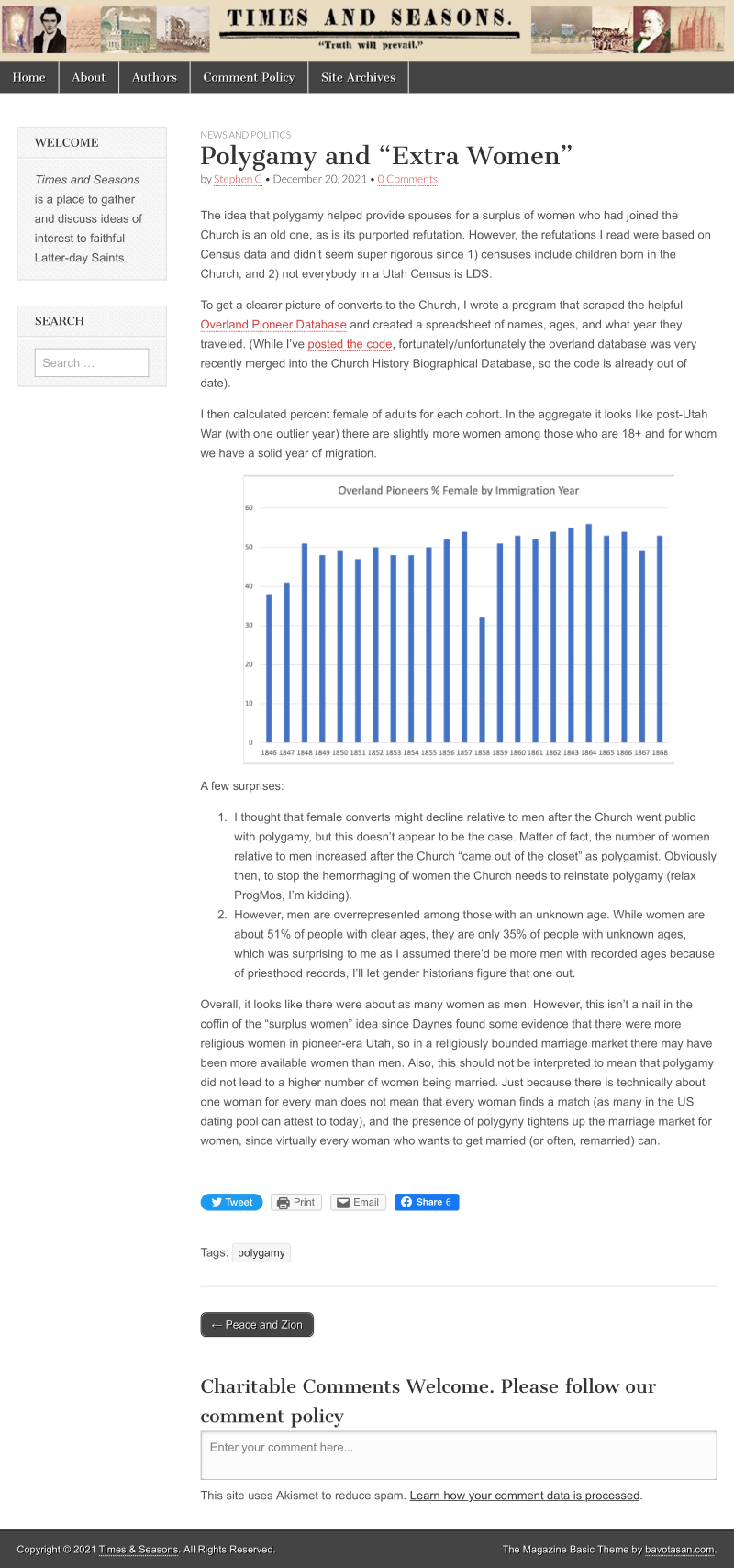Stephen Cranney in Times and Seasons presents data on how many women emigrated to pioneer Utah.
- Type
- Website
- Source
- Stephen Cranney LDS
- Hearsay
- Direct
- Reference
"Polygamy and 'Extra Women," Times and Seasons, December 20, 2021, accessed December 21, 2021
- Scribe/Publisher
- Times and Seasons
- People
- Stephen Cranney
- Audience
- Internet Public
- Transcription
The idea that polygamy helped provide spouses for a surplus of women who had joined the Church is an old one, as is its purported refutation. However, the refutations I read were based on Census data and didn’t seem super rigorous since 1) censuses include children born in the Church, and 2) not everybody in a Utah Census is LDS. To get a clearer picture of converts to the Church, I wrote a program that scraped the helpful Overland Pioneer Database and created a spreadsheet of names, ages, and what year they traveled. (While I’ve posted the code, fortunately/unfortunately the overland database was very recently merged into the Church History Biographical Database, so the code is already out of date).I then calculated percent female of adults for each cohort. In the aggregate it looks like post-Utah War (with one outlier year) there are slightly more women among those who are 18+ and for whom we have a solid year of migration.
A few surprises: I thought that female converts might decline relative to men after the Church went public with polygamy, but this doesn’t appear to be the case. Matter of fact, the number of women relative to men increased after the Church “came out of the closet” as polygamist. Obviously then, to stop the hemorrhaging of women the Church needs to reinstate polygamy (relax ProgMos, I’m kidding). However, men are overrepresented among those with an unknown age. While women are about 51% of people with clear ages, they are only 35% of people with unknown ages, which was surprising to me as I assumed there’d be more men with recorded ages because of priesthood records, I’ll let gender historians figure that one out. Overall, it looks like there were about as many women as men. However, this isn’t a nail in the coffin of the “surplus women” idea since Daynes found some evidence that there were more religious women in pioneer-era Utah, so in a religiously bounded marriage market there may have been more available women than men. Also, this should not be interpreted to mean that polygamy did not lead to a higher number of women being married. Just because there is technically about one woman for every man does not mean that every woman finds a match (as many in the US dating pool can attest to today), and the presence of polygyny tightens up the marriage market for women, since virtually every woman who wants to get married (or often, remarried) can.
- Citations in Mormonr Qnas
The B. H. Roberts Foundation is not owned by, operated by, or affiliated with the Church of Jesus Christ of Latter-day Saints.

